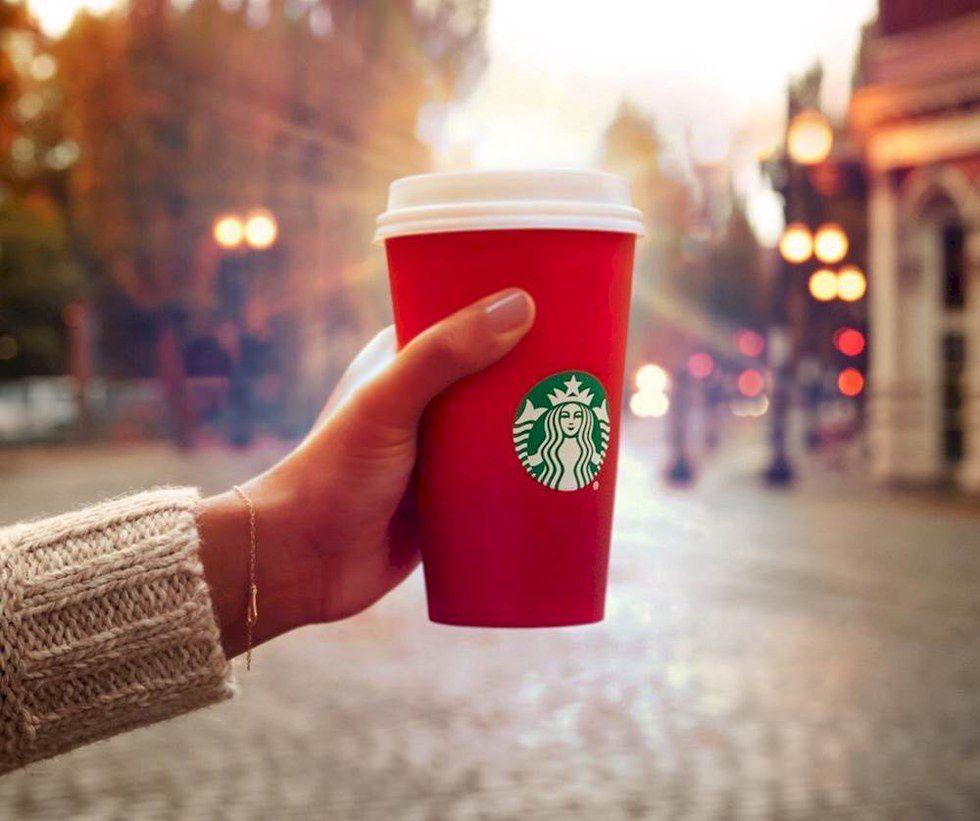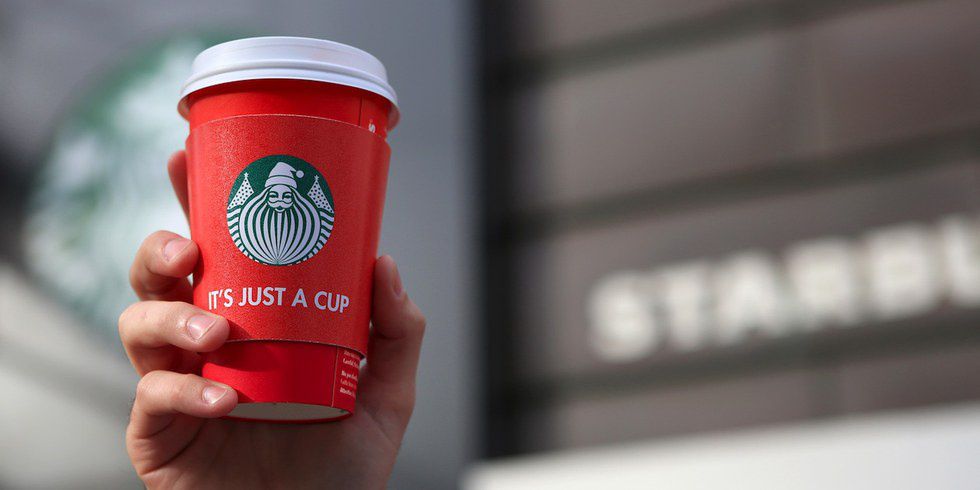Last year during this time, the "Red Cup Controversy" spurred an uproar on social media. There were tweets from celebrities like Donald Trump, Weird Al, and Candace Cameron-Bure that lectured the public on their views of the Red Coffee Cups. By mid-November of 2015, the "War on Starbucks" was a trending hashtag. It gained so much momentum that there were boycotts online and in real life, many in the United States, while others were overseas.
The red and green cups, part of Starbucks culture since 1994, are used to express the excitement and joy of the upcoming Holiday season. The issue that plagued social media last year, and the issue that continues to stir controversy today, is the color of the cups. Red and green, as the world knows, are the symbolic colors of Christmas. Red and green represent hundreds of Christmas motifs from holly berries and mistletoe to the color of Santa Clause's suit and Rudolph's red nose. Because Starbucks chose to print their cups in these two colors, more recently in an hombre color scheme, people around the world now presume Starbucks as being associated with the Catholic and Christian religions.
The issue being portrayed here is that because Starbucks has "taken sides," as so many have cared to put it, other religions are feeling "left out" and "inadequate" in comparison to Catholicism and Christianity due to Starbucks's "favoritism" towards Christmas's red and green colors. Many people are feeling personally attacked, especially those practicing a Jewish faith. The Jewish community, as I have come to understand, is one of the many religions feeling affected by Starbucks's cup color choice. Instead of Red and Green, the Jewish Community is asking why not blue and white to represent Hannukah.
In my opinion, Starbucks should be allowed to print whatever color cups they so please. The colors, in this case, are not portraying Starbucks as involved in one particular faith, instead, the colors of red and green are expressing the upcoming holidays and the cheer and joy associated with the winter season. As someone who is not dedicated to any one faith, I feel as though I have the right to say "who cares?" Why is it that coffee drinkers are suddenly upset with Starbucks for choosing these colors to represent the winter season?
For example, if you were a Jewish --or any other faith-practicing-person-- consumer walking through any large chain store, would you intentionally not buy a product because it is red or green? Would the colors, being associated with Christmas, stop you from buying a red plate or a green phone case? Why is it different now? How does a coffee cup affect your religion?
I recently posed the question: "How do you feel about the Starbucks 'Red Cup Controversy,'" to two of my friends, both practicing a religion other than Catholicism or Christianity. The first friend replied, "It doesn't matter. What's the importance of the cups anyway? It's a nice time of year; people who celebrate the holidays shouldn't care if the colors represent Christmas or not; they represent the giving season."
Similarly, the second friend stated in response to the question, "Starbucks cups are red and green. People are wasting their lives away, talking about these cups that, in the grand scheme of things, don't affect their lives. It wouldn't matter if the cups were pink or purple or orange, someone would have a problem with it either way."
In any case, I completely agree with both quotes. As a people, we should not label or target a company as being discriminatory because we don't like the color of their cups or because we don't understand the reasoning behind the colors. Instead, we should celebrate Starbucks for having the heart to spread Holiday warmth and cheer through a change in their product line. The red and green colors, in my opinion, do not represent Starbucks as being affiliated with a specific religion, but rather, represent a way to change the small things during the holiday season to spread joy and cheer in a subtle way.













































